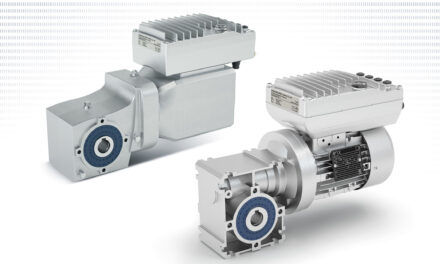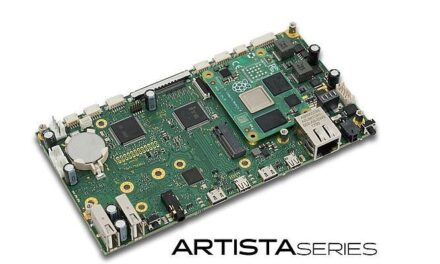Jo Seymour, Commercial Director at UDISYS Limited, a specialised distributor of displays and touchscreens, talks about the challenges product developers face when deciding how to choose a display or touchscreen for your product, what to consider and how to get the most out of your options.
How to choose the right display for your product
There are a range of display technologies available starting with small LCD, OLED & TFT displays for displaying basic letters or numbers through to large TFT displays used to stream 4K & 8K video. Most of these technologies can now be enhanced with a touchscreen of some kind.
Choosing the right display solution very much depends on what the application is and how you want to interface to your customer.
At what point should I contact a display distributor?
We always advise that you talk to us at the concept stage of a design. It’s important for us to understand what you want your product to do, then we talk to you about how you plan to interface to the customer and how you are driving it. Then we help establish the most appropriate technology to use to get the best result for you in terms of ROI (Return on Investment), performance, cost and achieving the best experience for your end user.
We go back to the basics, what do you want your display to look like? From there we can get things moving.
Things to consider when choosing a display and touchscreen for your product
We always advise that you talk to us at the concept stage of a design. It’s important for us to understand what you want your product to do, then we talk to you about how you plan to interface to the customer and how you are driving it. Then we help establish the most appropriate technology to use to get the best result for you in terms of ROI (Return on Investment), performance, cost and achieving the best experience for your end user.
We go back to the basics, what do you want your display to look like? From there we can get things moving and help you decide how to choose a display or touchscreen.
Environment factors for displays & touchscreen
Think about the environment you want to use your display in. This will be a major factor in how to choose a display or touchscreen for your product.
For example, if you are using a display outside you’ll need a display with a high bright backlight and if using a touchscreen, then you may want to consider optically bonding this to the display, this will help compensate for the sunlight reflecting off the glass surface of the display, which will make the screen hard to see and painful to interact with. It is important not to forget about the low and high temperatures experienced in outdoor conditions and the potential need to review the use of wider operating a storage temperature displays.
For inside and outdoor spaces there are also other considerations to think about, such as the need to use the touchscreen in conditions where the user needs to wear gloves, or where there could be water droplets on the screen and the IP rating you need your equipment to meet.
These are all considerations we will discuss with you during the concept stage to make sure the right technology is chosen.
 Consider end user behaviour
Consider end user behaviour
For some applications you will need to consider the behaviour people using the equipment. For example, in public transport areas, the user may apply excessive force to the screen, so the glass being used may well need to be made thicker and use a specific kind of treatment, as well as special coatings, to prevent it from breaking in a dangerous way.
Will your product be useful and profitable?
For us it’s often a fact-finding exercise, how do you want the display and touchscreen to perform and where is it going to be used?
You also need to consider what the end user will pay for it. Your features and the cost of the bells and whistles should be driven by how much the end user is willing to spend versus how many people will use and buy your product. ROI is an important metric, not just for you but for the longevity of your brand, you can’t serve your future customers if you don’t have the right profits to reinvest in manufacturing or new products.
Electronics design for your display element
It’s vital to know how you plan on driving your display on the electronics side. Are you designing your own processing board with a microcontroller that has a dedicated display interface and what resources do you have to create the software to display what you want you customer to see and interface with on the display.
Alternatively, you may want to reduce the time to market and/or the cost of developing your own electronics, in this case there are several intelligent display options available to you that allow you to easily design the user interface through the graphics chip on the back of the display using some pre-defined software. This may allow you time to concentrate on other areas of the design.
Think about what you want to do and importantly how much time you want to put into it, as you can use us for a display solution and design consultancies for electronics and software to do the work for you.
The changing landscape of display and touchscreen
Touchscreens are now a huge part of life. It’s become the norm for people to expect to see a display and it have an interactive screen. Even in industrial applications which used to be more tactile with physical buttons, there is now an expectation for touchscreen in many of these settings, either capacitive or resistive touch. As the technology advances, it gets cheaper to use, therefore implementing a capacitive touchscreen into your product could be a viable option.
However, there isn’t always a need for touchscreens if the display is simply there to show a message or a simple graphic.
Key challenges
The importance of a good specification
Avoid creating your specification for your design straight off the internet. The choice of displays is so vast it’s easy to waste valuable hours researching without the right context and make costly decisions that are more expensive than needed, don’t work correctly or hold up the project at a later date. Many displays in the public eye originate in the consumer world, and in some cases, the glass can be discontinued on completion of a single production run. Talking to a display partner like us, at the concept stage is best way to avoid this.
Not getting support soon enough
For both display and electronics it’s best to work on a project together with an expert team from the concept stage. Then we can understand what you’d like, what’s available and what works for you, rather than doing loads of research on interface design without speaking to the right people.
Longevity of supply
Make sure you use parts which have longevity of supply, for industrial applications it can often take years to develop the product and achieve the necessary certification and then the product goes to manufacture and suddenly parts have gone into end-of-life stage. You want to work with parts that the supplier can commit to making for the next 5+ years for example to avoid disaster.
Electronic component shortages
Be aware of the global component shortages impacting the electronics industry. This is not one to be underestimated or treated lightly. Lead times, availability and costs are all things you need to be on top of. Discussing what components are being used as part of the display module design in the early stages and understanding the availability are key to ensuring a successful product introduction.
The interface needs to be correct for the electronics sitting behind it. Use Design For Availability and try and avoid parts that are only available from one supplier, there’s no point getting the right display if you can’t get the product to market due to missing electronics.
Design elements for displays & touchscreen
UI design
Consider how you want the customer to interface with the application and talk to us, we will work with you to select the right display solution to ensure the interface to the customer promotes your brand and product best.
Low power design
Low power design is a big talking point in the industry. Your ability to achieve this depends on how much power your product needs when it is out in the field and how much capacity you have left from your battery after the rest of the electronics. You’ll want to look at battery power applications and you will need to consider how you are recharging the battery, you don’t want to be going out and charging that battery all the time and the system may be critical.
For example, Kindle-style ePaper technology is very low power as it is intended to display a small static amount of data for a period of time like the page of a book, when you press a button to turn the page you don’t expect this to be fast, there are a lot of people talking about ePaper and low power properties.



